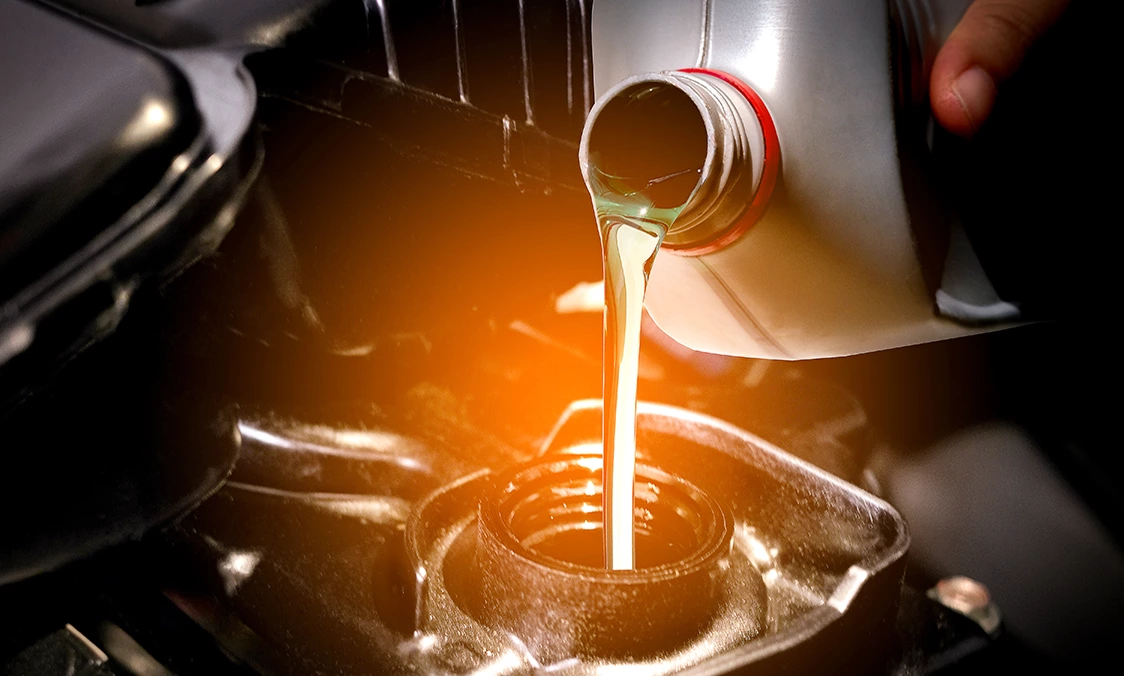This page provides answers to some of the most frequently asked questions about vehicle repair and service. We've thrown in some of our favorite tips and recommendations, too. Please call us or consult our Contact Us page for answers to your specific questions. We are happy to assist you!
Tires
-
Is it safe to repair a flat tire?
If a tire loses all or most of its air pressure, it must be removed from the wheel for a complete internal inspection to be sure it's not damaged. Tires that are run even short distances while flat are often damaged beyond repair. Most punctures nail holes, or cuts up to 1/4 inch which are confined to the tread may be satisfactorily repaired by trained personnel using industry-approved methods. Don't repair tires with tread punctures larger than 1/4 inch, or with any sidewall puncture. Also, never repair tires that are worn below 1/16 inch tread depth. Your Advisor and tire technician can advise you.
-
Should I rotate my tires?
The main purpose of regularly rotating tires is to achieve more uniform wear for all tires on the vehicle. It is recommended that you rotate your tires at least every 6,000 to 8,000 miles or uneven wear may develop. At strongly tire-oriented facilities this is a service typically done at no additional cost; along with free flat repairs, Nitrogen inflation, and an undercar inspection.
-
An illuminated light on my dash shows that I have a low tire. Can I just put air in it?
In many cases correcting the air pressure in your tires will extinguish the Tire Pressure Monitoring System (TPMS) warning light. Often seasonal temperature drops will lower tire air pressure a few pounds (a good case for Nitrogen – see 11 above) and trigger the TPMS warning light. In all cases where one or two particular tires are significantly lower than the others, or lower than the factory recommended pressure, a trained tire technician should examine the tire to determine the cause and examine the casing for signs of over stress. Some TPMS systems require special tools to access the vehicle computer. Advanced level tire technicians are trained and equipped for this technology.
-
How often should I rotate my tires?
Your tires should be rotated every other oil change, or every 6000 miles. Neglecting to rotate tires is a major cause of premature tire wear.
Vehicle Maintenance
-
Why does my vehicle's maintenance schedule recommend so many fuel system services?
Modern engines have long abandoned carburetion with its many parts destined for failure in favor of simple and direct electronic injection of fuel. No longer are we shackled with the necessity of constant adjustment or repair. A properly maintained fuel delivery system today offers much improved reliability and efficiency than those systems of old.
Millions of cars today run at a level of efficiency considerably reduced, due to the high concentration of carbon deposits accumulated in the fuel injection system, intake valves, combustion chambers, oxygen sensor and catalytic converter. Carbon build-up clogs fuel filters, reduces fuel flow, distorts fuel spray patterns, limits fuel automation and decreases combustion efficiency.
Carbon build-up gradually robs your vehicle of performance and fuel economy, and may cause numerous problems such as engine malfunction, high emissions, excessive fuel consumption, loss of performance, rough idling and hard starts. Simply infusing an additive into a gas tank will not adequately decarbonizes injectors, cylinder heads, valves, intake plenums, exhaust emission sensors, and other critical components.
-
What are all of the chemicals and fluid flushes for? Are they really necessary?
Protecting the vital wear points of your vehicle with quality lubricants will vastly improve service life and will provide optimum efficiency. Today’s properly maintained vehicles with 100,000 miles no longer consume oil and break with high frequency. Chemistry has played an important role. The right chemicals can restore the ph balance in radiators so that acidity will not degrade hoses and internal metals in radiators and coolers. Other chemicals such as transmission flush chemicals along with pulse flush equipment rinse the oxidation from the valves and other internal workings of transmissions.
-
When should I change my spark plugs?
For maximum fuel economy and peak engine performance, your spark plugs should be replaced every 30 months or 30,000 miles, unless your vehicle is equipped with 100,000-mile platinum tipped spark plugs.
-
What is the difference between maintenance and safety?
Maintenance is done to prevent any future problems from occurring to the vehicle. Safety is to prevent any incident that would cause damage to the vehicle, to you or to the driver who is driving next to you.
Vehicle Fluids
-
I see a fluid leak under my car, what is it?
You can identify fluids by their color and consistency:
• Yellowish green, pastel blue or florescent orange colors indicate an overheated engine or an antifreeze leak caused by a bad hose, water pump or leaking radiator.
• A dark brown or black oily fluid means the engine is leaking oil. A bad seal or gasket could cause the leak.
• A red oily spot indicates a transmission or power-steering fluid leak.
A puddle of clear water usually is no problem. It may be normal condensation from your vehicle's air conditioner.
-
I have a leak under my car. How can I tell what is leaking?
The coloring of the liquid identifies the type of liquid. Coolant Fluid is orange or green, Engine fluid is Brown or Black, Transmission Fluid is Red or Pink, Power Steering Fluid is Light Brown, Differential Fluid- Brown. depending on the leak it could mean trouble, don't wait until it's too late!
Vehicle Smells & Sounds
-
I smell something in /around my car, what could it be?
• The smell of burned toast - a light, sharp odor - often signals an electrical short and burning insulation. To be safe, try not to drive the vehicle until the problem is diagnosed.
• The smell of rotten eggs - a continuous burning-sulfur smell - usually indicates a problem in the catalytic converter or other emission control devices. Don't delay diagnosis and repair. • A thick acrid odor usually means burning oil. Look for sign of a leak.
• The smell of gasoline vapors after a failed start may mean you have flooded the engine. Wait a few minutes before trying again. If the odor persists, chances are there's a leak in the fuel system - a potentially dangerous problem that needs immediate attention.
• Burring resin or an acrid chemical odor may signal overheated brakes or clutch. Check the parking brake. Stop and allow the brakes to cool after repeated hard braking on mountain roads. Light smoke coming from a wheel indicates a stuck brake. The vehicle should be towed for repair.
A sweet, steamy odor indicates a coolant leak. If the temperature gauge or warning light does not indicate overheating, drive carefully to the nearest service station, keeping an eye on your gauges. If the odor is accompanied by a hot, metallic scent and steam-from under the hood, your engine has overheated. Pull over immediately. Continued driving could cause severe engine damage. The vehicle should be towed for repair.
-
My car is making a terrible sound, what information will help?
Squeaks, squeals, rattles, rumbles, and other sounds provide valuable clues about problems and maintenance needs. Here are some common noises and their definitions.
Squeal - A shrill, sharp noise, usually related to engine speed.
Click - A slight sharp noise, related to either engine speed or vehicle speed.
Screech - A high-pitched, piercing metallic sound; usually occurs while the vehicle is in motion.
Rumble - a low-pitched rhythmic sound.
Ping - A high-pitched metallic tapping sound, related to engine speed.
Heavy Knock - A rhythmic pounding sound..
Clunk - A random thumping sound.
The more details you can provide us, the better chance of locating the problem quickly. Does the noise occur when the engine is cold or warm? Hot or cold outside, rainy or dry? Does the noise occur while driving or only when parked? These clues help the technician diagnose your problems faster, saving you time and money!
-
I hear an intermittent noise from the front of my car. Do I need to worry about it?
Every noise should be checked by a qualified technician. Use you best judgment, if it sounds bad, get it checked right away. Quick action on a problem can many times save big dollars.
Oil Change
-
How often should I change my oil?
Most car manufacturers say to change your oil every 7,500 miles unless you drive in severe conditions. Severe conditions are defined as dirty or dusty roads, extremely hot or cold climates, a lot of stop and go driving, taking long trips or if you tow a trailer. If you answer yes to any of the severe driving conditions, your vehicle falls into the severe conditions category, or the 3,000 mile oil change interval.
-
When should I get my oil changed?
You should get your oil changed every 3000 miles or as recommended in your vehicle’s owner’s manual.
-
What is that milky brown engine oil?
Milky brown engine oil is an indication of coolant in the oil. This can be caused by a blown head gasket (other gasket), a failed transmission cooler, or cracked casings. This condition is very serious and needs to be checked by a professional technician quickly.
-
What is synthetic motor oil?
Synthetic motor oils can be a good choice for high output, turbocharged or supercharged engines, vehicles that are used for towing (especially during hot weather), or vehicles that are operated in extremely cold or hot climates.
Synthetic motor oils, though several times more expensive than mineral-based motor oils, can improve fuel economy and provide longer intervals between changes. They also provide instant lubrication on start-up.
Troubleshooting
-
What should I do if my car starts to overheat?
This is a very serious problem – if your car overheats for too long, you can damage your engine. As soon as possible, find a safe place to pull off the road and shut the engine off! Do not attempt to check the fluid level in the radiator as it can burn you. The best thing to do is have your car towed to a repair shop.
-
What dashboard lights should I worry about and which are just precautions?
Every dashboard light is responsible for notifying the owner of issues that need to be addressed. If any of the following lights are lit you need to have your vehicle looked at: Engine light, Oil light, ABS light, Traction light, Tire Pressure light.
Fuel System
Improving Gas Mileage
-
How can you increase fuel mileage?
To optimize gas mileage, check tires for proper inflation, make sure wheels are in alignment, check and replace filters, change Your oil regularly, keep your engine properly tuned, empty out your trunk of unnecessary items, observe the speed limit. These seemingly minor adjustments to your driving and maintenance habits can save on gas--and money!
Cabin Air Filters
-
What is a Cabin Air Filter?
Cabin air filters filter the air that comes from the outside of a vehicle into the passenger compartment. They were originally designed to remove solid contaminants like dust and soot from circulating inside the vehicle. These filters can now also absorb gases and odors. Cabin air filters may also be known as passenger compartment filters, pollen filters, or dust filters.
-
When did Cabin Air Filters come into being?
Cabin air filters first appeared in European vehicles in the mid-1980's. They began appearing in North American vehicles in 1994.
-
Is a Cabin Air Filter the same as an engine intake filter?
While most cabin air filters look like simple panel filters that are used to filter air to the engine, they are much more technologically advanced and contain an entirely different filtering media. Basically, engine intake filters protect engine components, whereas cabin air filters protect your lungs.
-
Why are Cabin Air Filters important?
Air quality is becoming a major concern for many people - outdoors, in our homes, and now even in our automobiles. An estimated 50 million Americans suffer from hay fever and other allergy-related problems.
-
Where are Cabin Air Filters located?
Cabin air filters are typically located behind a vehicle's dashboard, or behind the glove box. Others may be located in the engine compartment, typically in the cowl area.
-
How often should they be replaced?
Vehicle manufacturer recommendations may vary, but the general guideline for replacing cabin air filters is every 12,000 to 15,000 miles, or at least once a year.
-
What happens if they are not replaced at the recommended interval?
In addition to the possibility of unpleasant odors, filters that have been left in service for over 20,000 miles can result in decreased heating and air conditioning performance caused by restricted air flow through the cabin air filter.







